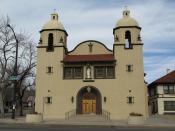Sexuality is defined in the present day by the The American Heritage Dictionary of English as the condition of being characterized and distinguished by sex. However, the meaning of sexuality changes over time, in relation to the individual and his or her cultural background. Homosexuality, as practiced in Ancient Greece, is quite different from that of the 20th century. In Ancient Greece, the gods' love for men was due in part to their beauty: "Zeus ... the handsome young Trojan Ganymedes, with whom he had fallen in love" (Reinhold, 81). Athenaeus mentioned once: "Boys are beautiful, for as long time as they look like women." From a Western point of view, "sexuality [is thought of] in terms of binary opposites: male and female, heterosexual and homosexual, marital sex and pre- or extramarital sex. And in every case, one of these pairs is privileged, is seen as the normal" (Highwater, 15).
Therefore, it can be concluded that sexuality has history. Sexual relationships can be found among the Greek gods in Greek mythologies. The Greek myths are an excellent example of the predominance of sexuality on human creativity. This paper will argue that sexuality does occur to a certain extent in certain defined spaces in the world today. Both sides to the argument will be shown by exploring the spaces of Saint Paul cathedral and Saint Francis church, an Anglican church along Swanston Street and a catholic church along Elizabeth Street respectively.
Spaces in this world can generally be classified as public or private. By default, public places are normally deemed as heteronormative spaces. This form of stereotyping spaces is governed by the government to present what is normal in a society. This creates a sense of alienation where homosexuality is concerned. In normal public spaces, one is usually expected to be...


